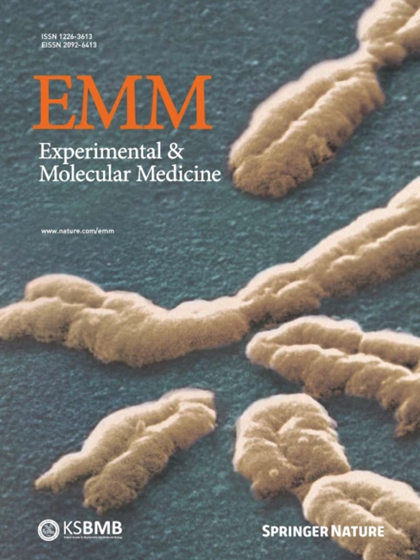Engineered EVs from LncEEF1G - overexpressing MSCs promote fibrotic liver regeneration by upregulating HGF release from hepatic stellate cells
IF 9.5
2区 医学
Q1 BIOCHEMISTRY & MOLECULAR BIOLOGY
引用次数: 0
Abstract
Fibrosis is a disease that negatively affects liver regeneration, resulting in severe complications after liver surgery. However, there is still no clinically effective treatment for promoting fibrotic liver regeneration because the underlying hepatocellular mechanism remains poorly understood. Through microRNA microarrays combined with the application of AAV6, we found that high expression of miR-181a-5p in activated hepatic stellate cells (HSCs) suppressed the expression of hepatic growth factor (HGF) and partially contributed to impaired regeneration potential in mice with hepatic fibrosis that had undergone two-thirds partial hepatectomy. As nanotherapeutics, mesenchymal stem-cell-derived extracellular vesicles (MSC-EVs) have been verified as effective treatments for liver regeneration. Here we observe that MSC-EVs can also promote fibrotic liver regeneration via enriched lncEEF1G, which acts as a competing endogenous RNA to directly sponge miR-181a-5p, leading to the upregulated expression of HGF in HSCs. Finally, engineered MSC-EVs with high expression of lncEEF1G (lncEEF1GOE-EVs) were constructed, suggesting greater potential for this model. In summary, our findings indicate that lncEEF1GOE-EVs have a nanotherapeutic effect on promoting regeneration of fibrotic livers by modulating the miR-181a-5p/HGF pathway in HSCs, which highlights the potential of extracellular vesicle engineering technology for patients with hepatic fibrosis who have undergone hepatic surgery. Partial hepatectomy is a common treatment for liver diseases, but liver fibrosis can hinder recovery. This study explores how mesenchymal stem-cell-derived extracellular vesicles (MSC-EVs) might help fibrotic livers regenerate after partial hepatectomy. Researchers found that MSC-EVs can boost liver regeneration by increasing hepatocyte growth factor production in hepatic stellate cells. The study uses a mouse model with liver fibrosis induced by carbon tetrachloride and then performed a partial hepatectomy. Researchers isolated MSCs from umbilical cords and extracted EVs from these cells. They injected these MSC-EVs into the mice and observed their effects on liver regeneration. MSC-EVs were found to be taken up by hepatic stellate cells, leading to increased hepatocyte growth factor production, which is crucial for liver cell proliferation. The results suggest MSC-EVs could be a promising treatment to enhance liver regeneration in fibrotic conditions. This summary was initially drafted using artificial intelligence, then revised and fact-checked by the author.

从LncEEF1G -过表达的MSCs中提取的工程化ev通过上调肝星状细胞的HGF释放来促进纤维化肝再生。
纤维化是一种对肝脏再生产生负面影响的疾病,在肝脏手术后会导致严重的并发症。然而,目前还没有临床有效的治疗方法来促进纤维化肝再生,因为潜在的肝细胞机制仍然知之甚少。通过microRNA微阵列结合AAV6的应用,我们发现在活化的肝星状细胞(HSCs)中,miR-181a-5p的高表达抑制了肝生长因子(HGF)的表达,并在一定程度上导致了接受了三分之二部分肝切除术的肝纤维化小鼠的再生潜力受损。作为纳米疗法,间充质干细胞来源的细胞外囊泡(msc - ev)已被证实是肝脏再生的有效治疗方法。我们观察到msc - ev还可以通过富集lncEEF1G促进纤维化肝再生,lncEEF1G作为竞争内源性RNA直接海绵miR-181a-5p,导致HGF在hsc中的表达上调。最后,构建高表达lncEEF1G的工程化msc - ev (lnceef1go - ev),表明该模型具有较大的应用潜力。综上所述,我们的研究结果表明,lnceef1go - ev通过调节造血干细胞中miR-181a-5p/HGF通路,具有促进纤维化肝脏再生的纳米治疗作用,这凸显了细胞外囊泡工程技术对肝纤维化手术患者的潜力。过表达lncEEF1G的工程间充质干细胞可以分泌富含lncEEF1G的细胞外囊泡(lnceef1go - ev)。将lnceef1go - ev注射到纤维化70%部分肝切除小鼠模型中,lncEEF1G与肝星状细胞中的miR-181a-5p竞争性结合,阻止miR-181a-5p与肝细胞生长因子信使RNA的相互作用。从而导致肝细胞生长因子分泌增加,促进肝细胞增殖。
本文章由计算机程序翻译,如有差异,请以英文原文为准。
求助全文
约1分钟内获得全文
求助全文
来源期刊

Experimental and Molecular Medicine
医学-生化与分子生物学
CiteScore
19.50
自引率
0.80%
发文量
166
审稿时长
3 months
期刊介绍:
Experimental & Molecular Medicine (EMM) stands as Korea's pioneering biochemistry journal, established in 1964 and rejuvenated in 1996 as an Open Access, fully peer-reviewed international journal. Dedicated to advancing translational research and showcasing recent breakthroughs in the biomedical realm, EMM invites submissions encompassing genetic, molecular, and cellular studies of human physiology and diseases. Emphasizing the correlation between experimental and translational research and enhanced clinical benefits, the journal actively encourages contributions employing specific molecular tools. Welcoming studies that bridge basic discoveries with clinical relevance, alongside articles demonstrating clear in vivo significance and novelty, Experimental & Molecular Medicine proudly serves as an open-access, online-only repository of cutting-edge medical research.
 求助内容:
求助内容: 应助结果提醒方式:
应助结果提醒方式:


